‘How should we choose texts to guide students through the info-blizzard?’
Thinking about the above question, posed by Eye Magazine, I started checking my bookshelves to see what I would recommend to a younger me. I remember that when I was in college, and during my junior years, I was always struggling with which book to buy next. Choosing one on a specific topic meant many late hours spent on reading reviews and looking for photos of spreads. So many, but which one would ‘teach the most’? I had no good libraries or bookshops to check at the time, and I couldn’t afford to get a ‘wrong’ one, shipping was quite expensive.
Unlike the lucky ones living in cities with big libraries and bookshops, the rest have to settle with buying online. Without guidance, this can be daunting, with its huge range. You might get a bibliography from your school, or you could find reading lists of great designers (see end of article for links), but these are rarely short, affordable or, most importantly, helpful and relevant for people early on their journey.
This is why I’m keeping my list to ten books. Five ‘basic’ books that will get you through almost anything, and five more that will help you build on the first. Most of them are about graphic design, but those that aren’t will help you just as much, maybe even more. Here they are, each with a short reason-why.
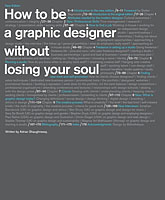
How to be a graphic designer without losing your soul
by Adrian Shaughnessy
ISBN-10: 1856697096
ISBN-13: 978-1856697095
This book will give you a very good general idea on what it actually means to be a graphic designer. Whether you plan to find a job or start on your own, Mr Shaughnessy offers plenty of details on what you need to know and do. He also interviews several high profile designers, asking for their tips. The table of contents, laid out on the cover, is more than self-explanatory.
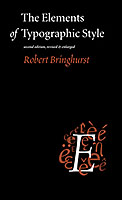
The Elements of Typographic Style
by Robert Bringhurst
ISBN-10: 0881792128
ISBN-13: 978-0881792126
While there is no such thing as too many typefaces (unless they’re on the same layout), this is less valid for typography books. Good typography is the backbone of any design, whether it’s a small Christmas card or a large supergraphic signage system. Hermann Zapf’s ‘wish to see this book become the Typographer’s Bible’ written on the back cover says it all.
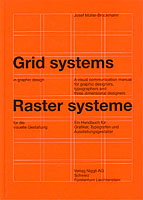
Grid systems
by Josef Müller-Brockmann
ISBN-10: 3721201450
ISBN-13: 978-3721201451
The 80’s are some thirty years back now and fortunately David Carson is just one, so you’ll need to learn the basics of grid systems, especially now that webdesign has finally caught up in using great typefaces and proper, even flexible grids. While the previous book will explain some of the basics, this book by Müller-Brockmann is the cornerstone. You don’t have to become a gridnik like Mr Crouwel, but any piece of design – just like architecture – needs a good structure.
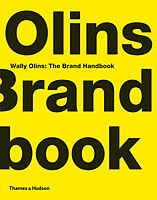
The Brand Handbook
by Wally Olins
ISBN-10: 0500514089
ISBN-13: 978-0500514085
Unless you’re living on a remote mountain, growing your own vegetables, you’ll know by now that brands are all around us. In this day and age, understanding branding has become maybe even more important than classic skills like typography or grid design. This book explains what brands are and how they work. If you’re involved in any commercial business, branding is essential for success, whether you’re a designer or not. You’ll rarely find such concise, no-bullshit writing on branding as from Mr Olins – and these days everyone writes about branding.
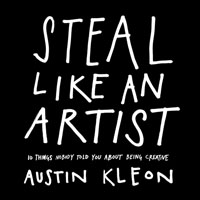
Steal like an artist
by Austin Kleon
ISBN-10: 0761169253
ISBN-13: 978-0761169253
I’ve rarely seen such concise pieces of advice for any creative venturer. You can read the ten short chapters in less than an hour, but you’ll find invaluable advice, ranging from copying as the best form of learning or freedom from debt to the importance of habits and perseverance. Buy it, read it, keep it on your table and browse it again and again.
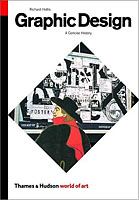
Graphic Design, A Concise History
by Richard Hollis
ISBN-10: 0500203474
ISBN-13: 978-0500203477
Graphic design has changed significantly with the introduction of PCs in the 1980s and with the spread of the Internet in the 1990s and especially the 2000s. Still, the core ideas remain pretty much the same as the ones used by the Bauhaus or Paul Rand. The past is a great source of inspiration, as long as you keep in mind that you need to steal from many, not just one. Hollis’s book is a great start (also look for the Meggs tome if you have the time and the money).
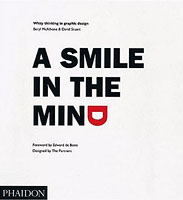
A Smile in the Mind
by Beryl McAlhone & David Stuart
ISBN-10: 0714838128
ISBN-13: 978-0714838120
Design without ideas is mere styling. This book shows plenty of memorable examples of fine design, the kind that makes you smile with admiration. The projects shown range from playful, witty to humorous or ironic, covering the main business sectors. It also contains interviews with 26 of the best designers, explaining how they got their ideas. A must have for any designer striving to learn how to think.
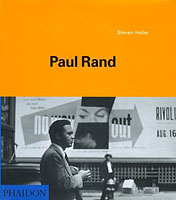
Paul Rand
by Steven Heller
ISBN-10: 0714839949
ISBN-13: 978-0714839943
Probably the best monograph ever written about a designer. Paul Rand is regarded as one of the finest thinkers, with work spanning from advertising, publishing to corporate design and children’s books. This volume will show you the endless possibilities in design (even before the digital era) and introduce you to one of the best role models you could have.
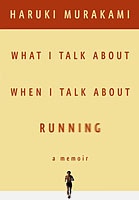
What I Talk About When I Talk About Running
by Haruki Murakami
ISBN-10: 0099526158
ISBN-13: 978-0099526155
It’s not about design, but this book will teach you about the importance of perseverance. Murakami offers great insights into what it takes to have a long and fruitful career. It also talks about the benefits of sport, especially for creatives that are bound to their chair for most of the day. Btw, this cover shown here is designed by Chip Kidd, look him up too.

Siddhartha
by Hermann Hesse
ISBN-10: 0141189576
ISBN-13: 978-0141189574
This is my all time favourite book. There’s so much to learn from it, but the main reason I’m including it here is that it talks about the importance of leaving your familiar places to experience diversity and about the search for meaning. It’s a great book for any designer that learns that best things come from ‘seeing’ (not just looking) around you, and dares to step out of the ‘bubble’ designers usually tend to live in.
Ending note
Such a list is never easy to do. I had to leave out many gems like ‘From Lascaux to Brooklyn’ by Paul Rand, ‘Make it Bigger’ by Paula Scher or the wonderful ‘The Art of Looking Sideways’ by Alan Fletcher. Also, ‘An A-Z of Visual Ideas’ by John Ingledew and ‘LogoDesignLove’ by David Airey are worth reading and keeping close, for daily references. All these will help you a lot, but in the end, the best way to learn is still working with a senior (in addition to doing a lot of work yourself, paid or personal). Read these and go out and find somebody better than you, learn everything you can, then find somebody even better and repeat. Good luck!
Other good lists
— check out Designersandbooks, the favourite books of many great designers;
— also worth checking out Frank Chimero’s and Jason Santa Maria’s book lists.